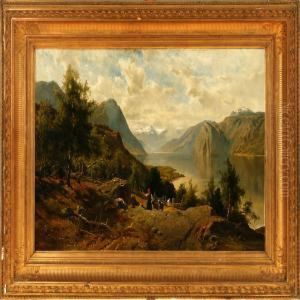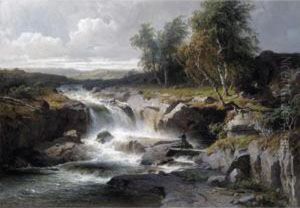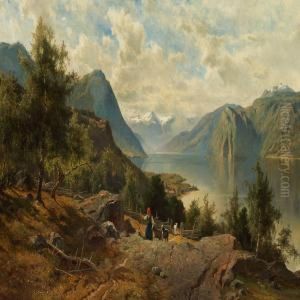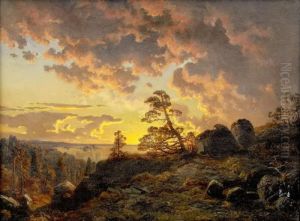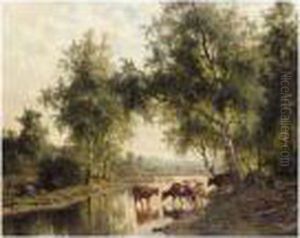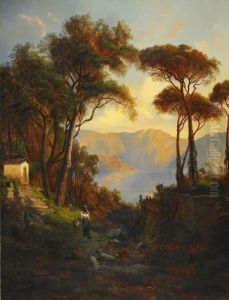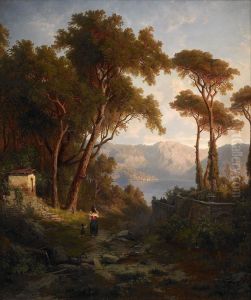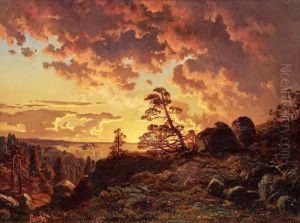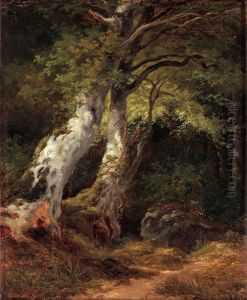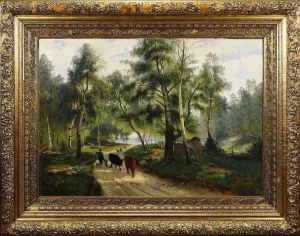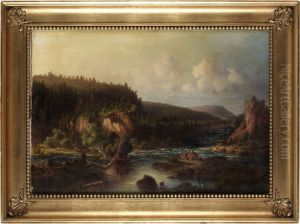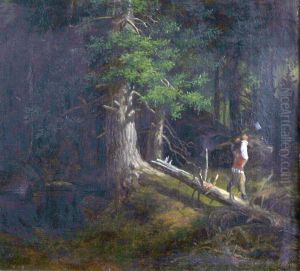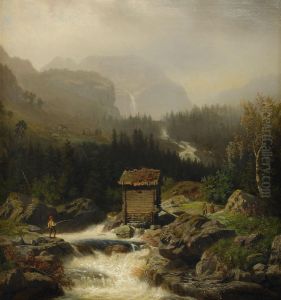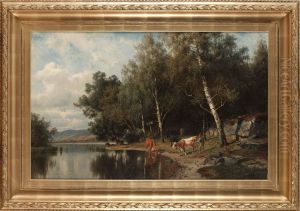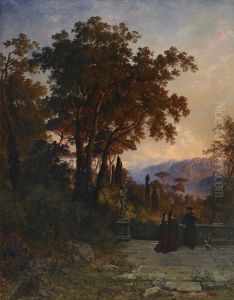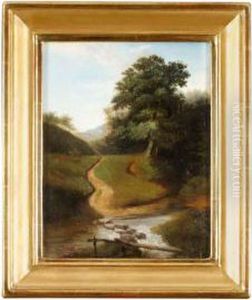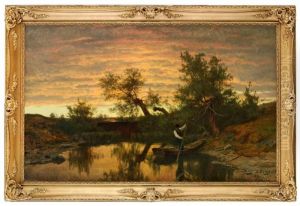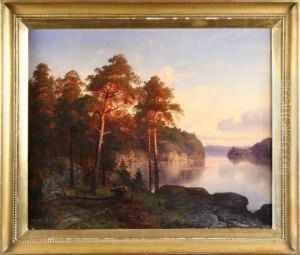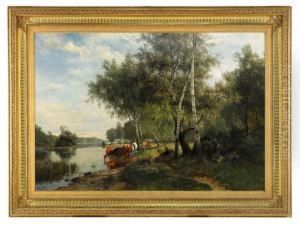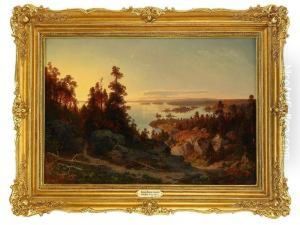Edvard Bergh Paintings
Edvard Bergh was a Swedish painter known for his landscape paintings. Born on April 26, 1828, in Stockholm, Sweden, Bergh was part of the Düsseldorf school of painting, which had a significant influence on Scandinavian artists during the mid-19th century.
Bergh began his artistic education at the Royal Swedish Academy of Fine Arts in Stockholm. However, like many of his contemporaries, he was drawn to the Düsseldorf Academy in Germany, which was well-known for its landscape painting. Under the guidance of prominent teachers such as Hans Gude, Bergh honed his craft, focusing on the meticulous rendering of natural scenery.
After completing his studies, Bergh traveled extensively, drawing inspiration from the diverse landscapes he encountered. He spent considerable time in Norway, where he painted the dramatic fjords and coastal scenes. Bergh's work is characterized by a keen attention to light and atmospheric effects, capturing the serene and sublime aspects of nature.
In the 1860s, Bergh returned to Sweden and became part of the art scene there, contributing to the development of Swedish landscape painting. His works were exhibited in various art galleries, and he received recognition for his contribution to Swedish art. Bergh's landscapes often reflect a romantic and nationalist sentiment, which was common among artists and intellectuals of his time as they sought to create a distinct Swedish cultural identity.
Edvard Bergh's career was relatively short, as he passed away on January 26, 1880, in Stockholm. Despite his early death, his paintings remain a testament to his skill and are considered important examples of 19th-century Scandinavian art. His works can be found in major Swedish art museums, including the Nationalmuseum in Stockholm.
